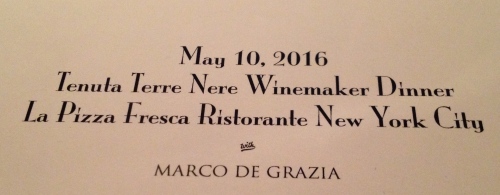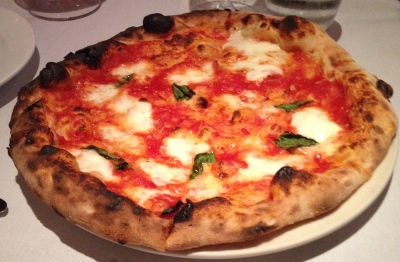I first discovered Il Marroneto when I was doing a portfolio tasting of the wines represented by Riccardo Gabiele and Elisa Bosco from Pr VIno. One of the wines was the Brunello di Montalcino of Il Marroneto “Madonna della Grazie”, owned by Alessandro Mori. It was the best wine of the tasting and one of the best Brunellos I have ever had.
I few months later I went to a seminar conducted by Alessandro and tasted a number of different vintages of his Brunello and liked them all.
I remember Alessandro saying that the wine really makes itself and he only does what is necessary. He has a traditional and minimalist philosophy both in the vineyard and in the cellar.
IL Marroneto is one of the 10 historical wineries of Montalcino and was purchased in 1974 by Giuseppe Mori, Alessandro’s father. The towers of the city of Siena are the backdrops of the estate’s vineyards located high on the north slope of the hill of Montalcino. The vineyards are at 400 meters and extend to the walls of the town. This is an area where grapes have been cultivated since the times of the Etruscans.
Alessandro said that they grow only Sangiovese grapes and follow a biodynamic approach to cultivation (although not certified), always abiding by the strict Montalcino regulations. No herbicides are used on the plants.
A few weeks ago Brad Bonnewell, owner of La Pizza Fresca, invited me to join him at a tasting of the wines of Il Marroneto. I would have the opportunity not only to taste the wines but also drink them with food.
There were six of us tasting and drinking the wine and we had a number of different pizzas, a pasta, and steak to accompany it.
The Wines
Brunello di Montalcino DOCG 100%. We drank the 2002, 2007,2009,2010, 2011 and 2012 Sangiovese. Fermentation lasts for 11/12 days. The wine is aged in 2,500 liter oak barrels for 39 months and 10 months in the bottle before release. All of the wines will last for 20 years or more. These are complex and elegant wines and have a certain easy feel in the mouth that is very pleasing but hard to describe. They have hints of black and red fruit, spice, and licorice with a touch of tobacco and leather. They will age for a long time.
The 2007 and 2010 were that the favorites of the evening. 2002 was a poor vintage in Tuscany yet this wine was showing no sings of age and could last for a number of years. The 2011 was a bad bottle.
Brunello di Montalcino “Madonna della Grazie” 100% Sangiovese. We drank the 2011 and 2012 This wine is made from a selection of grapes from the historical vineyards that surround the house. The name of the wine comes from the little 12th century church very near the vineyard, Madonna della Grazie. Fermentation is in Allier oak vats where it remains untouched for 2 days and the fermentation lasts for 20/22 days. The wine is aged in 2,500 liter oak barrels for 41 months and 10 months in bottle before release.
These are complex wines with aromas and flavors of citrus, cherry, licorice and mineral notes. They have a wonderful aftertaste and a long finish. They are excellent food wines and will age for a long time.
The vines were first planted in 1975 near the church of Madonna della Grazie, (which the estate’s top Brunello comes from). The original building dates back to 1247. The rest of the estate’s vineyards were planted in 1979 and 1984. The soil is coarse sandy soil rich in minerals. There is natural grass planted between the rows of vines with longer time for pollination. Pruning takes place in March. The vineyards are planted for low yields and low density. The training system is spurred cordon. Grapes are harvested only when the stalks start to turn to burnt colors, indicating that the seeds have reached optimum maturity.
The estate’s name derives from a central tower that was once used to dry chestnuts (castagne or marroni in Italian), long a source of flour in Italy. The wines are aged in the base of the tower in large Allier and Slovenian oak barrels.
These are very traditional made wines with plenty of pumping over. Alessandro added there are no barriques on the estate!
































